
5 minute read
Hail to a King
by Ensemble
By Barb Sligl
A gender-bending event in the Czech Republic celebrates folkloric traditions with music, merrymaking and shots of brandy.
The bright-blue sky pales against primary colours adorning the houses, horses and villagers of Vlčnov in Moravia. I spot a man in a voluminous white shirt and blue vest embroidered with red-fringed hearts. Then another in pleated-andpuffed sleeves, a woman in a baroque skirt and flamboyant headdress, a girl in a floral kerchief and a boy with a white rose in his mouth. It’s a hot spring day in this southeastern corner of the Czech Republic, but everyone is wearing layers of ruffles and embellishments, from pompom-adorned hats to knee-high leather boots.
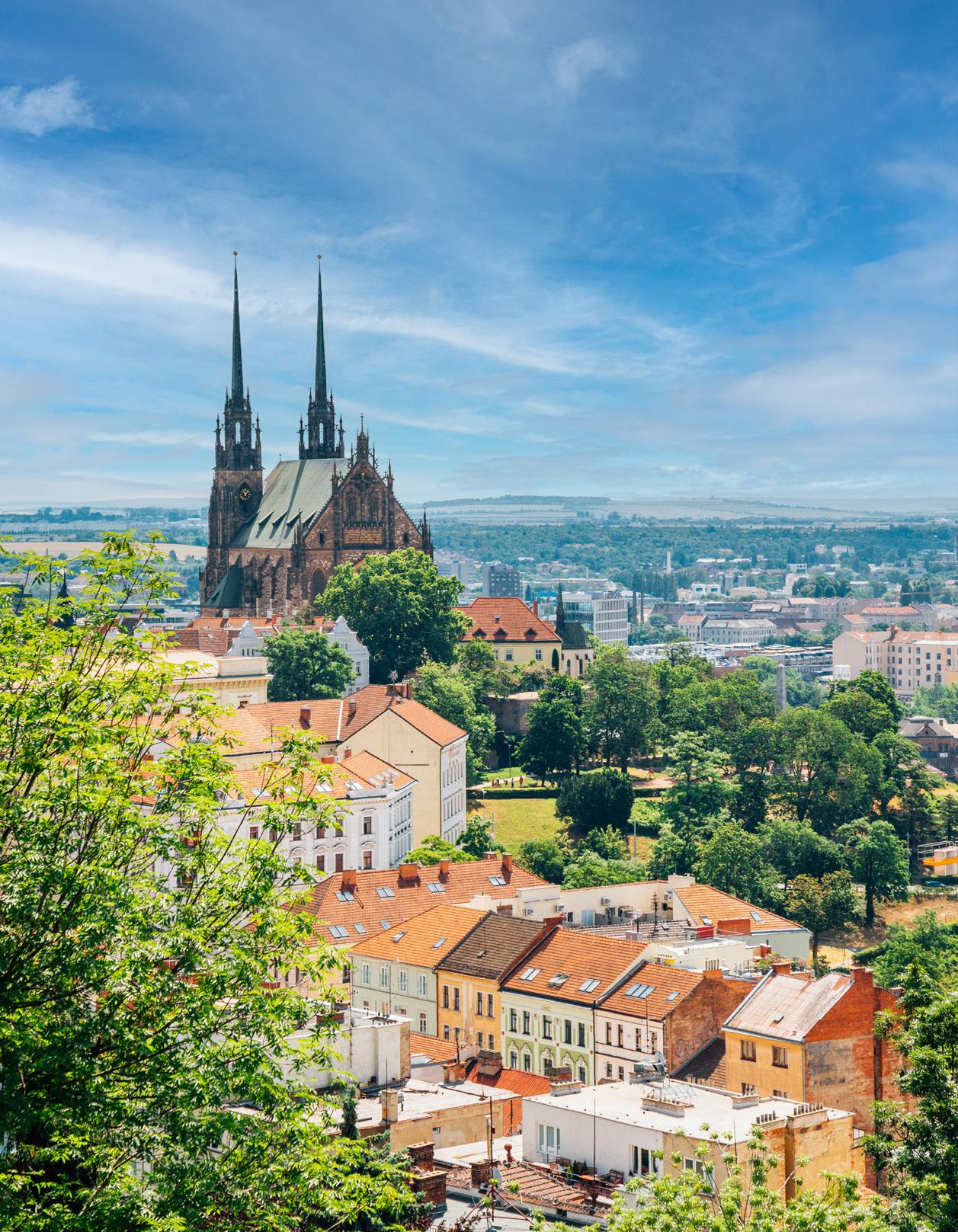
SPILBERK CASTLE IN BRNO, CZECH REPUBLIC
It’s a kaleidoscopic display that seems straight out of a fairytale. It could be, as this is celebration stemming from the legend of a king who escaped capture by dressing as a woman, veiled in ribbons and a rose in his mouth. The folktale has become the Ride of the Kings, an annual festival held for centuries and is now on UNESCO’s Intangible Cultural Heritage of Humanity list. The boy I see with the rose in his mouth, nearly hidden beneath flouncy fabric and astride a flower-bedecked white horse, is the latest king in a rite of passage the entire village of just 3,000 inhabitants participates in.

THE RIDE OF THE KINGS IN VLČNOV
© LUKAS ZENTEL
The weekend-long festivities of Jízda králů, as the Ride of the Kings is called in Czech, include gala ceremonies and an outdoor fete on Saturday night. Live music is played amid búdy, gingerbread-house-like huts, where locals gather and share copious amounts of plum brandy. I join the party in the Moravian countryside at twilight, walking from búda to búda listening to folk singers, fiddlers and dulcimer bands.
I’m told that every Czech is a musician and everyone here knows the lyrics of the folk songs. The country’s heritage is steeped in music, from the world-famous compositions of Dvořák to the melodies in these meadowlands of the White Carpathians. This landscape has another UNESCO designation as the Bílé Karpaty Biosphere Reserve, cited for being “rich in traditions and living folklore.” Under the starlit sky with the chorus of music and crickets, it’s a storybook scene that’s only a three-hour drive from Prague.
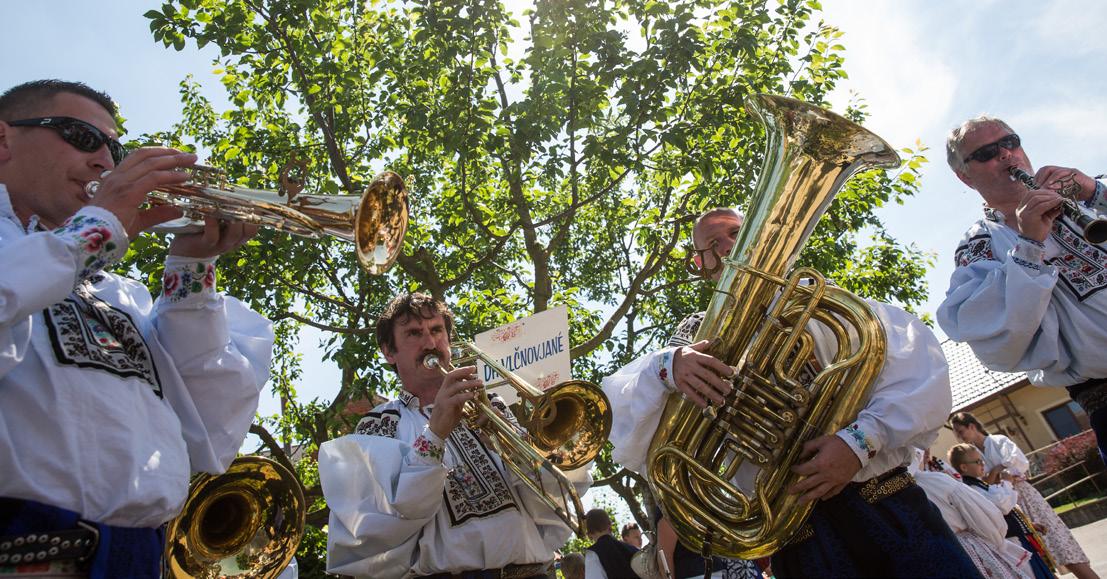
MUSICIANS IN PREPARATION FOR THE PARADE
© LUKAS ZENTEL
The music, dancing and partying continues into Sunday, when girls decorate Vlčnov with handcrafted crepe-paper flowers and boys escort the new king on horseback, reciting poems and calling for gifts from the crowd. A parade forms and more musicians march and perform. There are floats, folk dances and stalls with sweet poppy-filled buns, Frankovka wine, wooden crafts and t-shirts that say “I love Budý” for sale. A woman watching the parade from her front lawn offers me a shot of plum brandy. It’s my third before noon.
My new friend and I toast the boyking with the white rose in his mouth. He’s 12 years old but plays the role with solemn grace, flanked by past recruits and two young guards also in women’s clothes. Whatever the origins of this springtime procession and ritual, today the 200-year-old celebration in Vlčnov is a joyous social event that everyone looks forward to. The king’s mother and father, his neighbours, my brandy-proffering friend and I are all beaming.
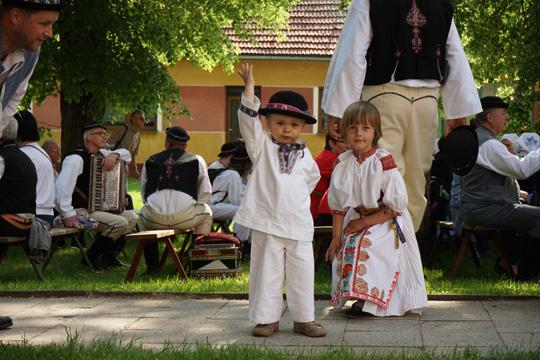
EVERYONE WEARS TRADITIONAL CLOTHING FOR THE EVENT
© BARB SLIGL
Held on the last weekend of May, the Ride of the Kings welcomes thousands of spectators. The popular event has been captured by renowned Czech artists, from 19th-century painter Joža Uprka, who documented Moravia’s folklife, to contemporary novelist Milan Kundera. And the romanticism of the region extends into other traditions and artisanal products, from bobbin lace in Vamberk to blueprint in Strážnice. The indigodye printing technique, modrotisk, uses flora-and-fauna motifs carved in wooden blocks – some of which are 300 years old – and is yet another UNESCO-recognized cultural heritage.
I see the modrotisk hearts of Strážnice in the heart-embroidered vests of Vlčnov and folkloric flourishes in a country of storied castles and places of pilgrimage (and many more UNESCO recognitions). Sometimes age-old traditions thrive and feel remarkably relevant, like the genderbending celebration of the Ride of the Kings. The boy-king with a rose in his mouth brings people together and upends expectations of small-town Europe as much as those shots of plum brandy.
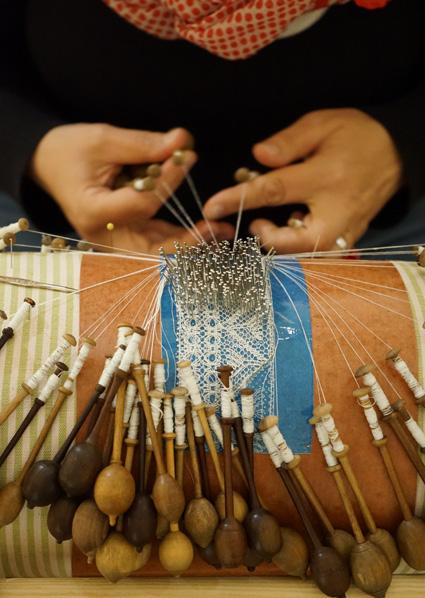
HANDMADE MORAVIAN EMBROIDERY
© BARB SLIGL
Our Experts Suggest…
MORAVIA HIGHLIGHTS AT A GLANCE
From grand castles (an estimated 2,000 country-wide) to great beer, much of the Czech character can be found in Moravia. The capital, Brno, has a legendary dragon (Brněnský drak), a lively university culture and Villa Tugendhat, a UNESCO World Heritage Site. Designed by renowned architect Ludwig Mies van der Rohe, this 1930 must-see monument of modern architecture contrasts all those ancient castles, but overlooks one, too – the 13th-century Špilberk.
Nearby are two other don’t-miss castles: Litomyšl, a striking example of Bohemian Renaissance style with sgrafitto (also a UNESCO site, where scenes from Oscar-winning Amadeus were filmed), and Kroměříž, home to the Archbishop’s Château and Gardens as well as elaborate facades and arcades in town (with UNESCO designations for both).
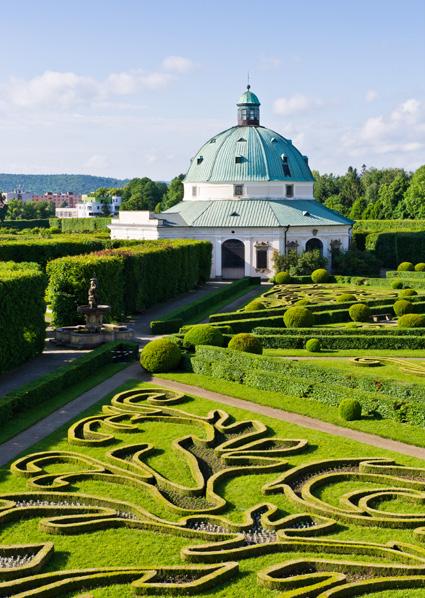
FLOWER GARDENS IN KROMĚŘÍŽ, CZECH REPUBLIC
The colour continues into the White Carpathians, where Moravian blue (ultramarin modrý) accents and folkloric motifs decorate the exterior of wine cellars built into hillsides. They contain local varietals, such as Pálava, Muškát Moravský and Frankovka. There’s also the Rudolf Jelínek Slivovice distillery, where you can tour and taste 400 years of tradition and enjoy a beloved beer garden in which to sip pivo or try classic dishes like fruit dumplings. Note: anything goes with beer here.
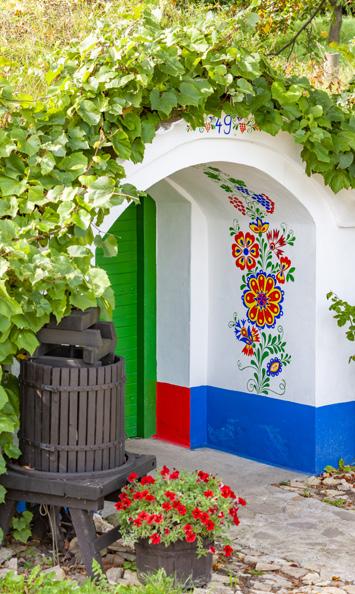
MORAVIAN MOTIFS DECORATE THE EXTERIOR OF WINE CELLARS










